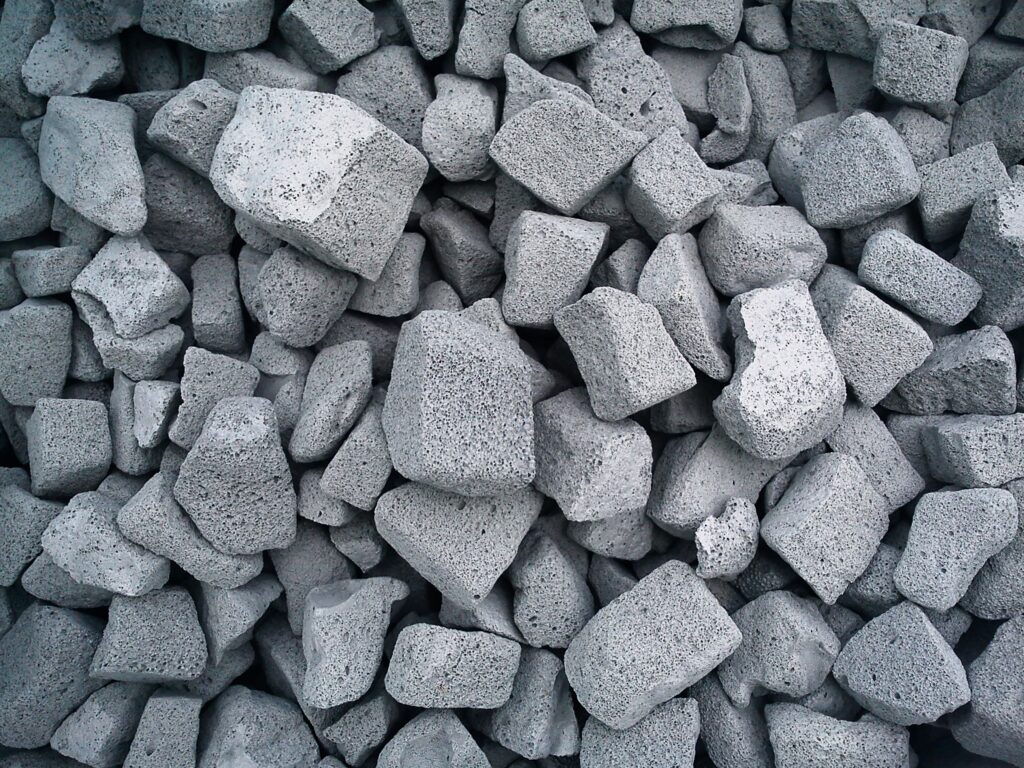Foam glass gravel is a lightweight recycled material that is useful for a wide range of applications
Foam glass gravel is a lightweight gravel-like filling material with insulating and draining properties. It is used in the construction and renovation of buildings. It is especially necessary for the infrastructure and buildings built on fragile ground.
Foam glass gravel is one of the lightest filling materials which at the same time has high load capacity. It is easy to use and is very light (approximately 200 kg per m3). It is more than seven times lighter than regular stone gravel.
Foam glass gravel is produced in Järvakandi out of clean and recycled glass. The production process guarantees that the product does not contain any organic matter.
It has the lowest carbon footprint of its class. Foam glass is non-flammable and has great draining properties.
The structure of foam glass gravel is porous, making it lightweight, strong and thermally insulating. The pieces of foam glass gravel are polygonal with rough fracture surface. Due to the “self-locking” properties it has an extremely high angle of variation – up to 45°.
Foam glass gravel is packed in 1,5 m 3 bigbags and they are available in big construction stores. Larger quantities are delivered as bulk material.
The volume of foam glass gravel in construction reduces depending on the need for compaction: 10-25% in infrastructure construction or 5-10% in regular construction. It does not need to be compressed unless the construction is used for walking or
driving.

How is foam glass gravel produced?
Foam glass gravel is produced in Järvakandi out of clean and recycled glass. Broken glass is powdered and mixed with a foaming agent. The mixed powder is slowly sent through a kiln, where the temperature reaches 900 degrees Celsius. The volume increases five times in the kiln. The foamed glass breaks into gravel on cooling. Foam glass gravel consists of one part of glass and ten parts of air.

Is there a long experience in the use of foam glass gravel?
Foam glass gravel has been used in Europe in the construction of buildings and infrastructure for over a quarter of a century. The first factories were established in Switzerland and Germany during the 1980s. In Northern Europe Norway has the longest experience in using foam glass gravel since the 1990s. Since then, it has been used in Sweden, Finland and Denmark.
What is foam glass gravel used for?
Foam glass gravel is compression-resistant, lightweight and thermally insulating which makes it highly useful in different construction areas.
In the construction of buildings foam glass gravel is used as a filling and insulating material. It is used for the insulation and drainage in the construction of solid floors. It is easy to use and can be used in the construction of ceilings and flat roofs.
In infrastructure and landscaping it has the same function: it reduces the pressure on fragile grounds and other constructions. Foam glass gravel can be used as a very durable thermal insulation material. It is used as a lightweight and/or insulating filling material in:
- street and road construction or repair
- the embankments of bridges and viaducts
- sports grounds and outdoor constructions
- backfilling of retaining walls and port construction
- outdoor pipe insulation etc.
In conclusion it is used where the lightweight properties have a significance, financial or otherwise, during the construction or usage of the object.
What are the benefits of foam glass gravel?
The main benefits of foam glass gravel are its high load capacity despite its low volume mass, easy installation and great insulating and draining capabilities.
Foam glass gravel is one of the lightest filling materials. Its volume mass is only a fraction of the respective stone gravel. Transportation is very cost efficient.
Foam glass gravel is easy to install due to its rough surface and friction.
The surface can be used instantly – the material withstands walking and machine pressure and the construction is easy to compress. Foam glass gravel can be used to make thicker carrier layers and it reduces the need for intermediate layers.
It has great isolating and draining qualities. It is non-flammable and it does not promote corrosion. It does not contain organic matter.
Foam glass gravel is a reusable material which is made of recycled glass.

Is foam glass gravel an environmentally friendly product?
Foam glass gravel can be used as a filling or insulating material for the construction of road, street and field facilities in the groundwater uptake areas.
It does not cause the evaporation or dissolution of harmful substances in normal use. Foam glass gravel is lightly alkaline with a pH around 10.
Foam glass gravel is inflammable. It does not contain corrosive substances, therefore no special protection measures are required for the metal in contact with it.
Dry foam glass gravel may generate dust during handling and users should avoid inhalation of dust. The size and quantity of the dust depends on the product type. A respirator with a particulate filter (P2), work gloves, goggles and clothing should be worn when working with the material.
Additional information on the use and handling of the product can be found on the material safety note.
Foam glass gravel is a reusable material which is made of recycled glass.

